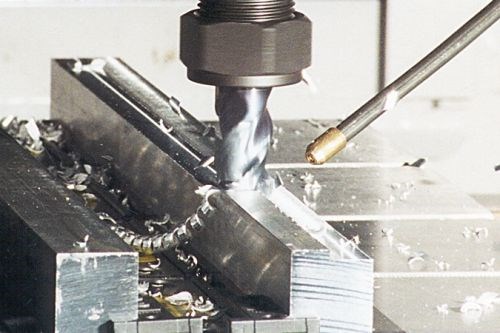Study Details Advantages of MQL for Micromachining
A recent study found that Minimum Quantity Lubrication increased tool life by 100 times versus dry micromachining of 316L stainless steel.

MQL minimizes a shop’s environmental impact by significantly reducing fluid usage and eliminating the need for coolant treatment and disposal.
In a recent e-newsletter, Unist, designer and manufacturer of industrial fluid application systems, cited a study about micromilling 316L stainless steel using Minimum Quantity Lubrication. (MQL is the process of applying minute amounts of lubricant directly to the cutting tool/work piece interface instead of using traditional flood coolants.) The study found that a properly configured MQL process can reduce the built-up edge on a micro cutting tool and increase tool life as much as 100 times compared to dry milling. It cites the importance of quantifying tool runout, wetting both the cutting tool and the workpiece, and properly positioning the MQL stream to maximize lubrication at the chip/material interface.
The report (“Micromilling in Minimum Quantity Lubrication” found in Machining Science and Technology: An International Journal) is available for purchase here. Additional information about the advantages of machining with MQL can be found at Unist’s website as well as this blog post and this article about Ford’s use of MQL.
Related Content
-
Jorgensen's Coolant Collection System Eliminates Sludge Build-Up
The PermaClean system adds agitation to the coolant collection system or holding tank and prevents particulates from settling.
-
High-Speed Videos Analyze Machining Processes in Fine Detail
Blaser Swisslube captures the machining process, chip formation and behavior of its Synergy 735 metalworking fluid through high-speed, macro photos and videos.
-
AFT's Semi-Synthetic Coolant Extends Sump Life
Advanced Cool 2200 provides high visibility while machining, keeping the machine and parts clean with no odor issues.

.jpg;width=70;height=70;mode=crop)










.png;maxWidth=300;quality=90)



